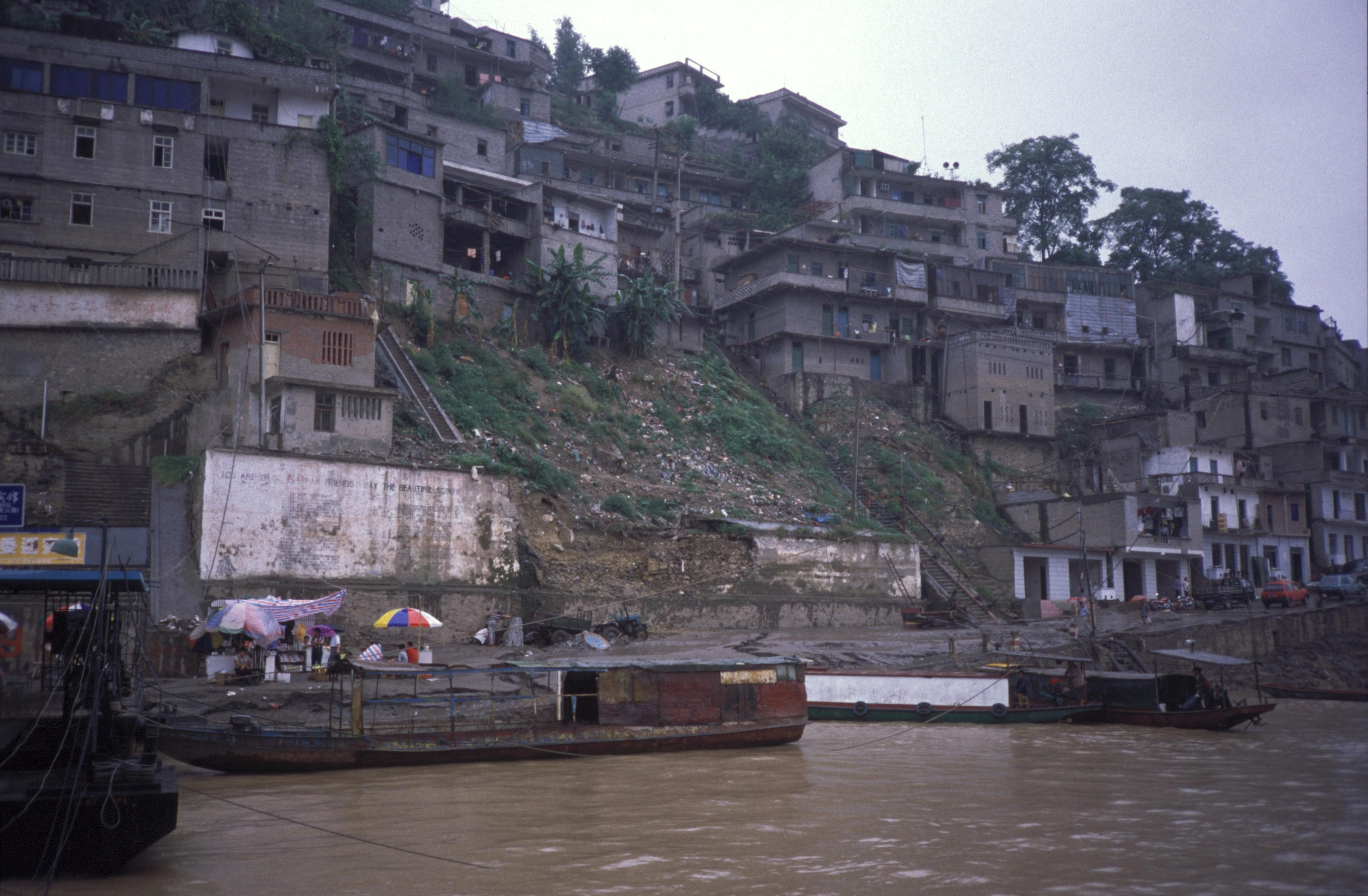Wu Gorge on:
[Wikipedia]
[Google]
[Amazon]


 Wu Gorge (), sometimes called Great Gorge (), is the second gorge of the
Wu Gorge (), sometimes called Great Gorge (), is the second gorge of the


 Wu Gorge (), sometimes called Great Gorge (), is the second gorge of the
Wu Gorge (), sometimes called Great Gorge (), is the second gorge of the Three Gorges
The Three Gorges () are three adjacent gorges along the middle reaches of the Yangtze River, in the hinterland of the People's Republic of China. With a subtropical monsoon climate, they are known for their scenery. The "Three Gorges Scenic A ...
system on the Yangtze River
The Yangtze or Yangzi ( or ; ) is the longest river in Asia, the third-longest in the world, and the longest in the world to flow entirely within one country. It rises at Jari Hill in the Tanggula Mountains (Tibetan Plateau) and flows ...
, People's Republic of China. Formed by the Wu River, it stretches from Wushan to Guandukou, and is located downstream of Qutang Gorge
The Qutang Gorge () is the shortest of China's Three Gorges. Immediately downstream of the ancient village Baidicheng (白帝城) the Yangtze River passes between the Chijia Mountain (赤甲山) on the north and the Baiyan Mountain (白鹽山 ...
and upstream of Xiling Gorge
Xiling Gorge () is a gorge on the Yangtze River (Chang Jiang) in Hubei province, China. It is the easternmost and largest of the Three Gorges.
Geography
Xiling Gorge is located in Zigui County and Yiling District, in the west of Hubei province, ...
. The gorge straddles the boundary between Wushan County of Chongqing
Chongqing ( or ; ; Sichuanese pronunciation: , Standard Mandarin pronunciation: ), alternately romanized as Chungking (), is a municipality in Southwest China. The official abbreviation of the city, "" (), was approved by the State Co ...
Municipality (formerly part of Sichuan
Sichuan (; zh, c=, labels=no, ; zh, p=Sìchuān; alternatively romanized as Szechuan or Szechwan; formerly also referred to as "West China" or "Western China" by Protestant missions) is a province in Southwest China occupying most of t ...
Province) and Badong County
Badong County () is a county located in western Hubei province, People's Republic of China, bordering Chongqing municipality to the west. It is the northernmost county-level division under the administration of Enshi Prefecture. The Yangtze R ...
, Hubei
Hubei (; ; alternately Hupeh) is a landlocked province of the People's Republic of China, and is part of the Central China region. The name of the province means "north of the lake", referring to its position north of Dongting Lake. The p ...
Province.
The Gorge has been known as the Wu Gorge since at least the Three Kingdoms Period
The Three Kingdoms () from 220 to 280 AD was the tripartite division of China among the dynastic states of Cao Wei, Shu Han, and Eastern Wu. The Three Kingdoms period was preceded by the Eastern Han dynasty and was followed by the We ...
, when it was recorded in the geographical treatise Shui Jing Zhu
The ''Commentary on the Water Classic'' (), or ''Commentaries on the Water Classic'', commonly known as ''Shui Jing Zhu'', is a work on the Chinese geography in ancient times, describing the traditional understanding of its waterways and ancient ...
. In 589 AD, General Lü Zhongsu of the Chen Dynasty stationed troops in the Wu and Xiling Gorges in an attempt to stop the advancing Sui Dynasty
The Sui dynasty (, ) was a short-lived imperial dynasty of China that lasted from 581 to 618. The Sui unified the Northern and Southern dynasties, thus ending the long period of division following the fall of the Western Jin dynasty, and la ...
armies. Tang Dynasty
The Tang dynasty (, ; zh, t= ), or Tang Empire, was an Dynasties in Chinese history, imperial dynasty of China that ruled from 618 to 907 AD, with an Zhou dynasty (690–705), interregnum between 690 and 705. It was preceded by the Sui dyn ...
poet Yang Jiong wrote a classical poem entitled "Passing Wu Gorge" ().
The mountains on both sides of the Yangtze, through which the river cuts the Wu Gorge, are known as the Wu Mountains (''巫山, Wū Shān'').
References
*''Zhongguo Gujin Diming Dacidian'' 中国古今地名大词典 (2005). Shanghai: Shanghai Cishu Chubanshe 上海辞书出版社. Page 1456. Canyons and gorges of China Landforms of Hubei Landforms of Chongqing {{hubei-geo-stub